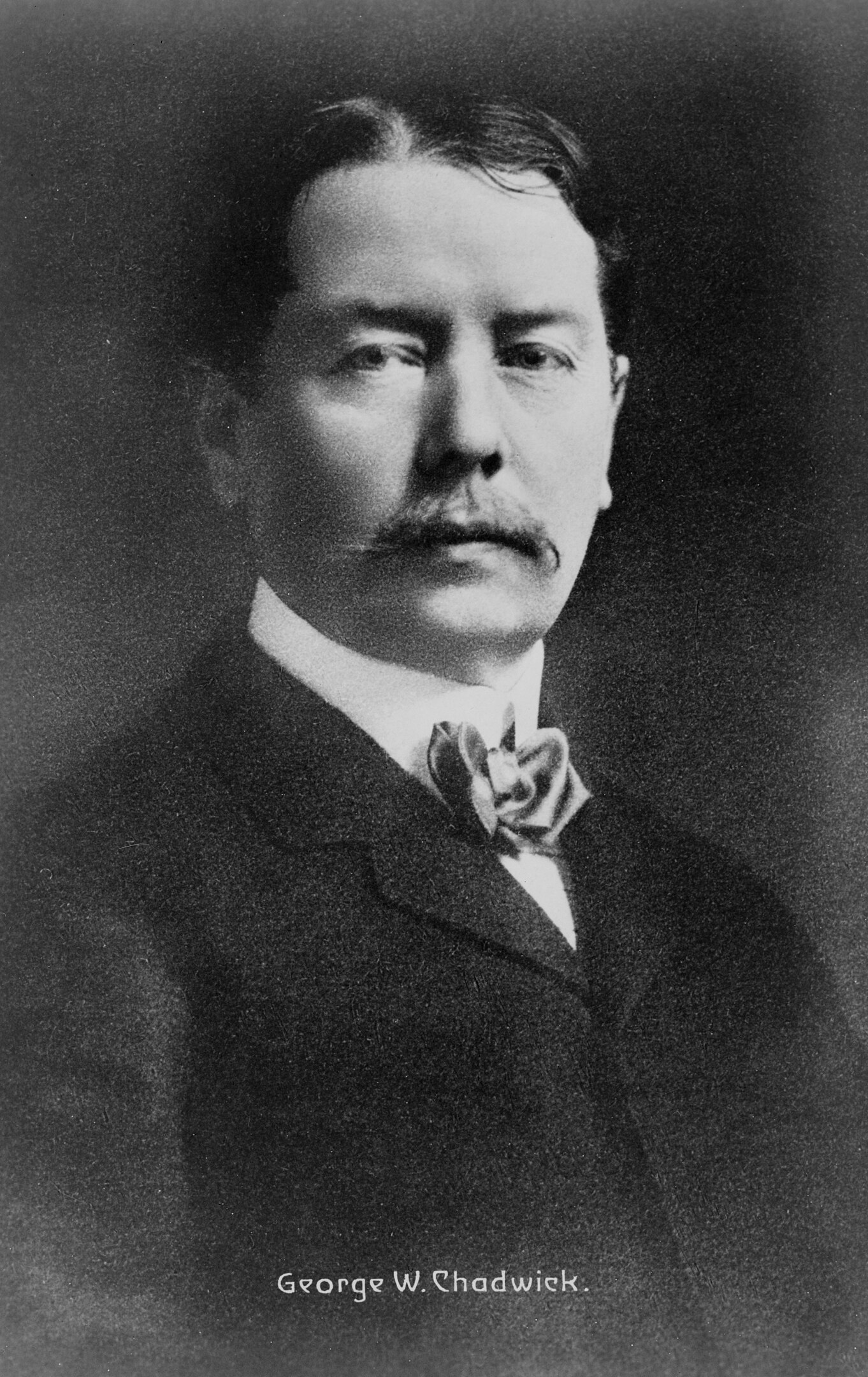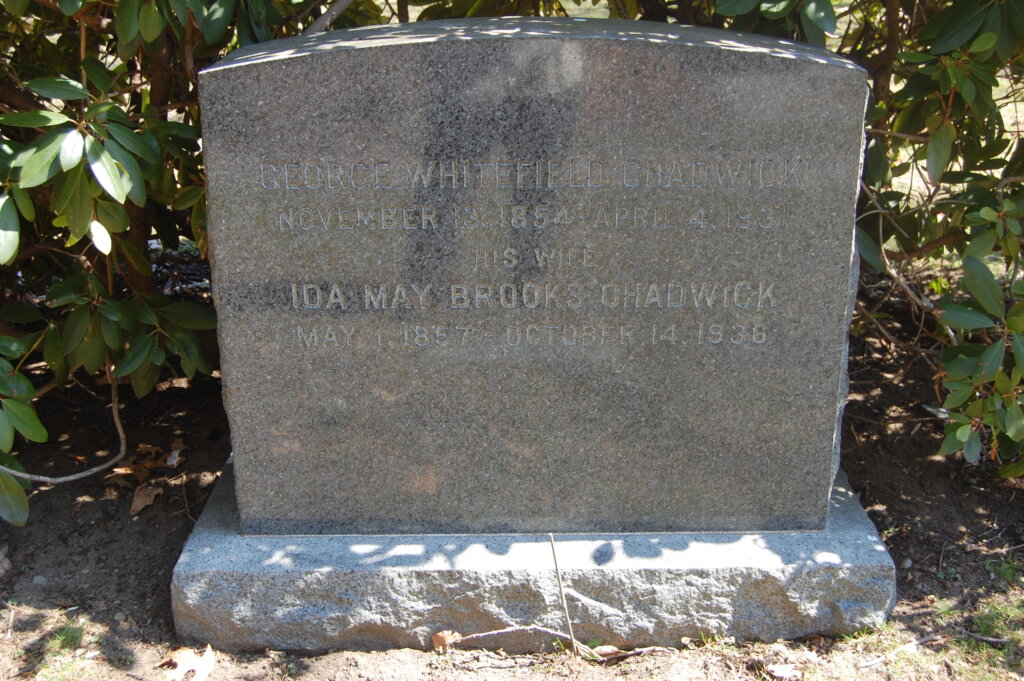
George Whitefield Chadwick (1854-1931)
Composer, Conductor, & Educator
A composer, conductor, and educator, George Whitefield Chadwick was born in Lowell, Massachusetts on November 13, 1854.
Chadwick displayed musical proficiency from an early age. By the age of 15, he was a special student at the New England Conservatory, studying the organ. Chadwick was offered a temporary professorship at Olivet College in Michigan in 1876 and founded the Music Teachers National Association while there. Upon his return to Boston in 1880, Chadwick’s musical career flourished and he joined the faculty of the New England Conservatory of Music, becoming its director in 1897. He is largely credited with transforming the school from a piano teacher training college to a European-style conservatory through the additions of an opera workshop, student repertory orchestra, and courses in orchestration and harmony. His popular textbook, Harmony: A Course of Study (1897), went through 50 editions.
As Chadwick focused on his career as a composer, he passed his teaching responsibilities over to his advanced composition students, including: Horatio Parker, one of his lifelong friends; Edward Burlingame Hill (Lot 5862 Mist Path); Daniel Gregory Mason (Lot 1289 Geranium Path); and Arthur Shepherd. Influenced by the work of Dvorak and Mendelssohn, Chadwick composed a number of choral works including The Viking’s Last Voyage, and delved into orchestral compositions to reflect the popularity of major orchestras in the Boston area in the 1880s.
Chadwick was considered one of the most prominent figures in American music by the 1890s. In 1892 he composed an ode for the opening ceremonies at the World’s Columbian Exposition in Chicago. In addition to his growing success and renown as a composer, Chadwick served as director to the Boston Orchestral Club for several years and directed and conducted the Springfield Festival (1890-99), the Worcester Festival (1897-1901), and the Norfolk Festival.
While Chadwick is often characterized as a “Boston classicist,” reflecting his early conservatory training, his work demonstrates a departure from the German conservatory style and the cultivation of an expressly American style of music. Influences in his compositions include musical ideas from English, Afro-Caribbean, Greek, and Latin roots.
Chadwick’s most significant works, developed between 1908-1918, include: a Christmas oratorio, Noël (1907-08); the symphonic fantasy Aphrodite (1910-11); Tam O’Shanter (1914-15); and Anniversary Overture (1922). Throughout his career he collected many honors and prizes, and was elected a member of the National Institute (1898) and the American Academy of Arts and Letters (1909), which awarded him a gold medal in 1928. Towards the end of his life, many orchestras held all-Chadwick concerts to acknowledge his contribution to American music. Chadwick died in Boston in 1931 and was buried beside his family.

George Whitefield Chadwick is buried at Mount Auburn in Lot 6740 on Narcissus Path.
Footnotes:
Adapted from the research of Laura M. Gosman, as published in Mount Auburn’s Person of the Week: George Whitefield Chadwick, 2002.
